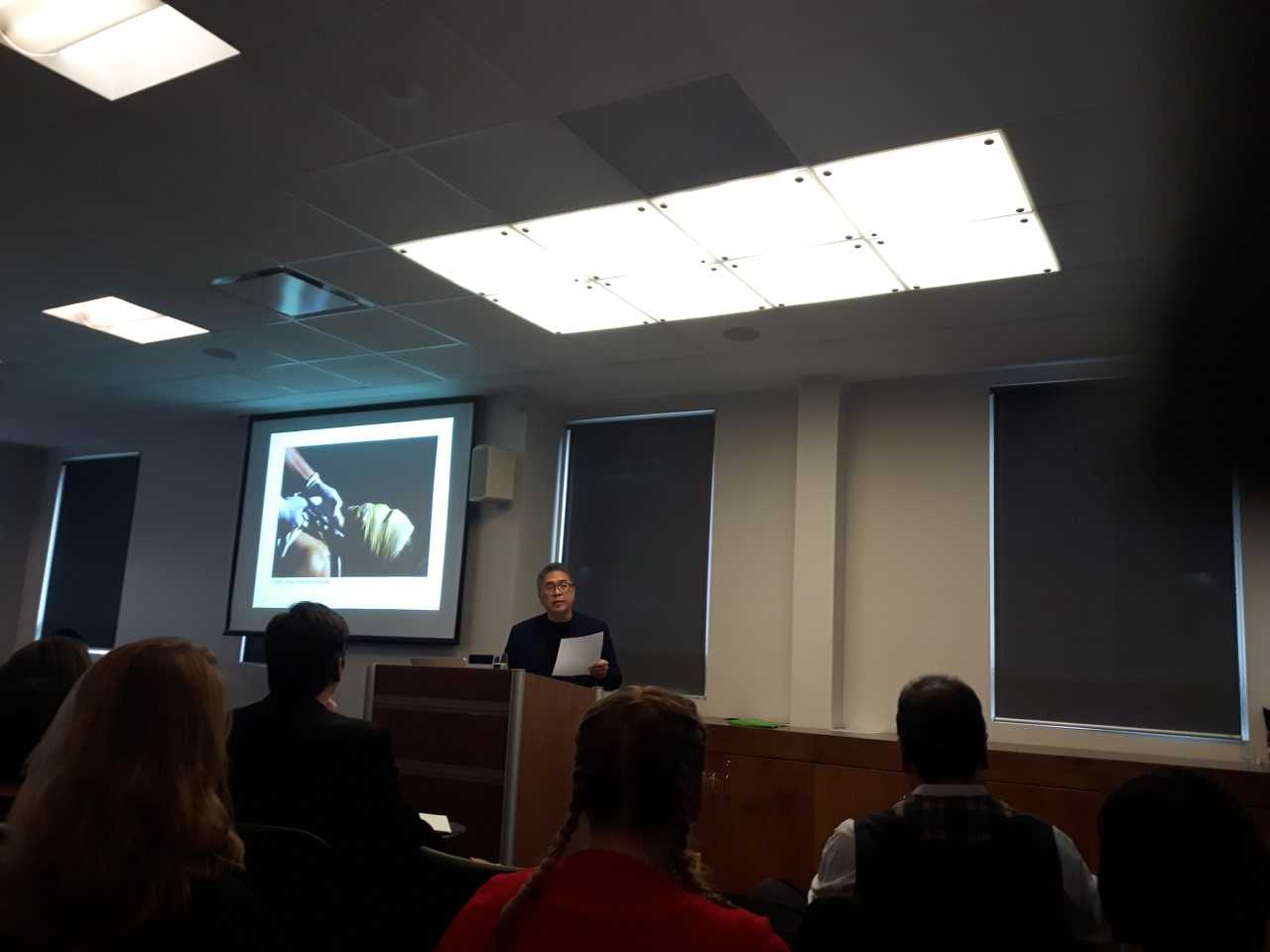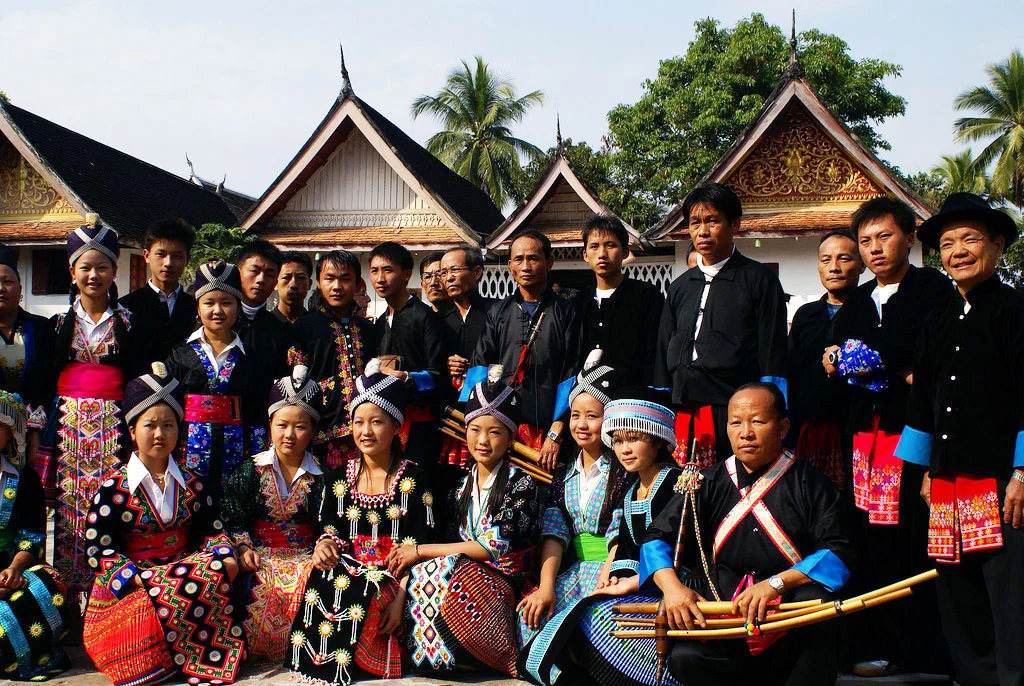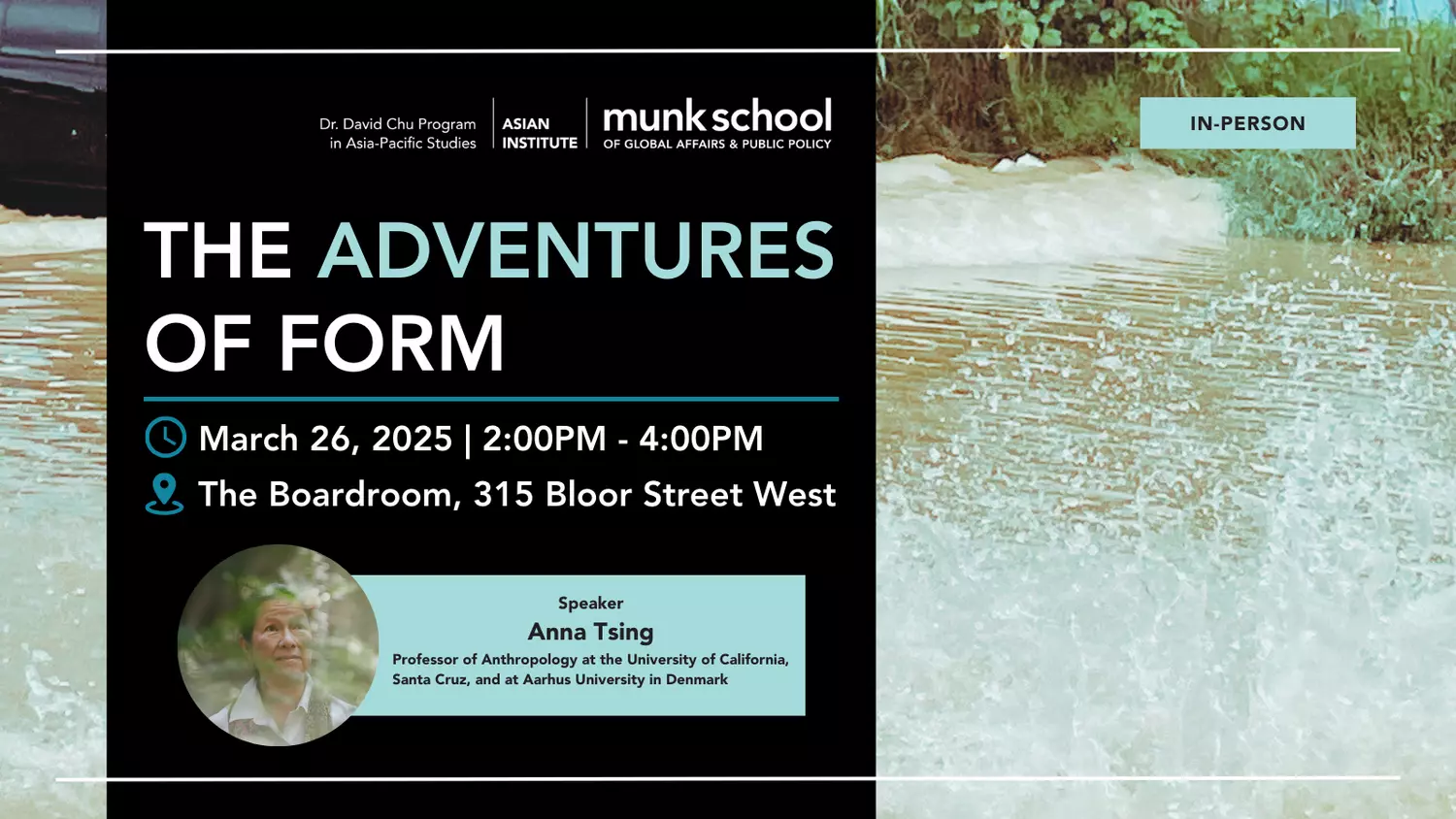On October 12, 2018, the Dr David Chu Program in Asia-Pacific Studies hosted Professor Vicente L. Rafael as part of its Distinguished Visitor Lecture Series. The lecture, titled “Trauma, Mourning, Witnessing: Photographing the Philippine Drug War”, was held in the Jackman Humanities Building at the University of Toronto. Professor Rafael is the current Giovanni and Amne Costigan Endowed Professor of History at the University of Washington. As a ‘path breaker,’ Professor Rafael has written across disciplinary boundaries traversing history, media, photography, anthropology, postcolonial research, and translation studies. He has developed an extensive body of research and study into Southeast Asia, particularly in the Philippines. The Dr. David Chu Program in Asia-Pacific Studies co-sponsored the event with the Centre for Southeast Asian Studies. This event was also supported by the Centre for Diaspora and Transnational Studies and the Munk School of Global Affairs and Public Policy. The lecture was chaired by Professor Takashi Fujitani, Director of the Dr. David Chu Program in Asia-Pacific Studies.
Professor Rafael’s visual presentation contained images of corpses taken by photojournalists reporting on the drug war that began in 2015 in the Philippines. Professor Rafael began his lecture by warning the audience that the nature and content of these photographs may make them difficult to view and that attendees may look away or leave the room if need be. It was precisely the affective quality of these photographs that anchored Professor Rafael’s analysis of the role of photojournalism, death, and the process of witnessing in his research of the Philippine drug war.
The President of the Philippines, Rodrigo Duterte, has led an open and ongoing war against drugs and drug addicts since his inauguration. Under President Duterte’s sovereign rule, drug addicts are perceived as an existential threat to society. Professor Rafael drew out this state-sanctioned and state-created “landscape of death,” in which over 27,000 drug addicts have been murdered by the police force. In the context of this bloody and systematic eradication, photojournalism is an area of intervention, reaction, and transformation.
Professor Rafael’s research revolved the work of the “Nightcrawlers”, a group of photojournalists at the front lines of Philippine’s drug war. Addicts and innocents alike are killed under the cover of night by the police, who then wrap their heads and hands with duct tape and pose corpses with signs proclaiming them as threats to society. Many photojournalists have cultivated relationships with funeral parlours to be informed of the locations of bodies left by the police. Photographs that have emerged from coverage of the Philippine drug war illuminate the ability of photographs to exist outside of, and through, space and time. Captured in a photograph, the agency of the corpse becomes an ‘uncanny’ thing to behold. Many of the corpses are left on display, becoming testimonies to the power of the state, an indentured afterlife in which bodies enact the will of President Duterte’s regime.
Yet the “strange agency of corpses” moves beyond sovereign instrumentality. Corpses, having become inhuman, are now endowed with their own set of shifting meanings and affective abilities. Professor Rafael uses the work of the prominent Nightcrawler and photojournalist Raffy Lerma and his experiences with photographing corpses to draw out the importance of the gaze—to look upon the face of the dead, and to be looked back at. Lerma spoke of his experience photographing the revealed faces of corpses as a visceral experience, a gaze that felt like becoming a corpse himself. Professor Rafael connected the inhuman gaze of corpses and the inhuman mechanical eye of a camera to demonstrate a moment of affect for the photographer himself, who was so affected by his experience of the gaze that he became dehumanized himself.
By interviewing and working with photojournalists, Professor Rafael also studied trauma experienced by photojournalists through their work. Defining trauma as a conflict between experiencing an event and one’s ability to narrate or make that experience legible, Professor Rafael noted that traumas temporarily disable photographers, who are so often driven by a ‘categorical imperative’ to perform their work. Professor Rafael argued that to deal with traumas is to reconceive oneself, not as a passive observer, but as an active witness; not as a technician, but as an advocate and moral agent. In this elaborated process of witnessing, photographs became testimonies and artifacts that exist outside of space and time. Photojournalists align themselves with survivors and the families of the victims. They transform into mourners and develop ongoing relationships with victims. Professor Rafael’s analysis elaborated upon the idea that the humanities of photojournalists are secured by forming relationships with living survivors and becoming mourners and witnesses in their own right. Corpses that were rendered inhuman through the act of murder became saturated with meanings and imagery. A dead body was an icon of collective suffering, and a victim was transformed into a martyr. Raffy Lerma’s iconic photograph “Pieta” was a crucial piece in Professor Rafael’s presentation: a woman cradling her murdered loved one in the glow of low and concentrated lights, visibly wailing. She was the Madonna, and he was the martyr. The transformation of murder into sacred tableau makes death legible. This is a process of giving faces, of “enfleshing the death”, of rehumanizing corpses and transforming them into victims, martyrs, and icons. Trauma can thus become mourning.
Professor Rafael addressed questions from the audience after the lecture, some of which focused on the mechanics of photography itself. One audience member noted the absence of images of murderers in these photographs. Professor Rafael pointed out that the murders are state-sanctioned, and all officers are complicit, so there could be no accountability or justice obtained by trying to bring individual police officers to trial. Another guest raised a question about the risk of violence porn, and a lack of grieving that may result from exhibiting these pictures. Throughout his lecture, Professor Rafael approached photographs as testimonies, aesthetic artifacts, and commodities for mass consumption. He situated them as existing in two economies: the moral economy of mourning and the capitalist economy of using images for global visual consumption. Although mass consumption may remove shock value from images of death, thus no longer inciting a moral imperative in its viewers, Professor Rafael argued that these photographs, suspended in space and time and constituted the afterlives of victims, always do the work of rehumanizing the victim. Photographs give faces to victims, making death grievable, and demanding a response.
Sebastin Noor is a recent graduate of the University of Toronto’s Social and Cultural Anthropology specialist program. She is interested in the study and archiving of visual and material cultures.








